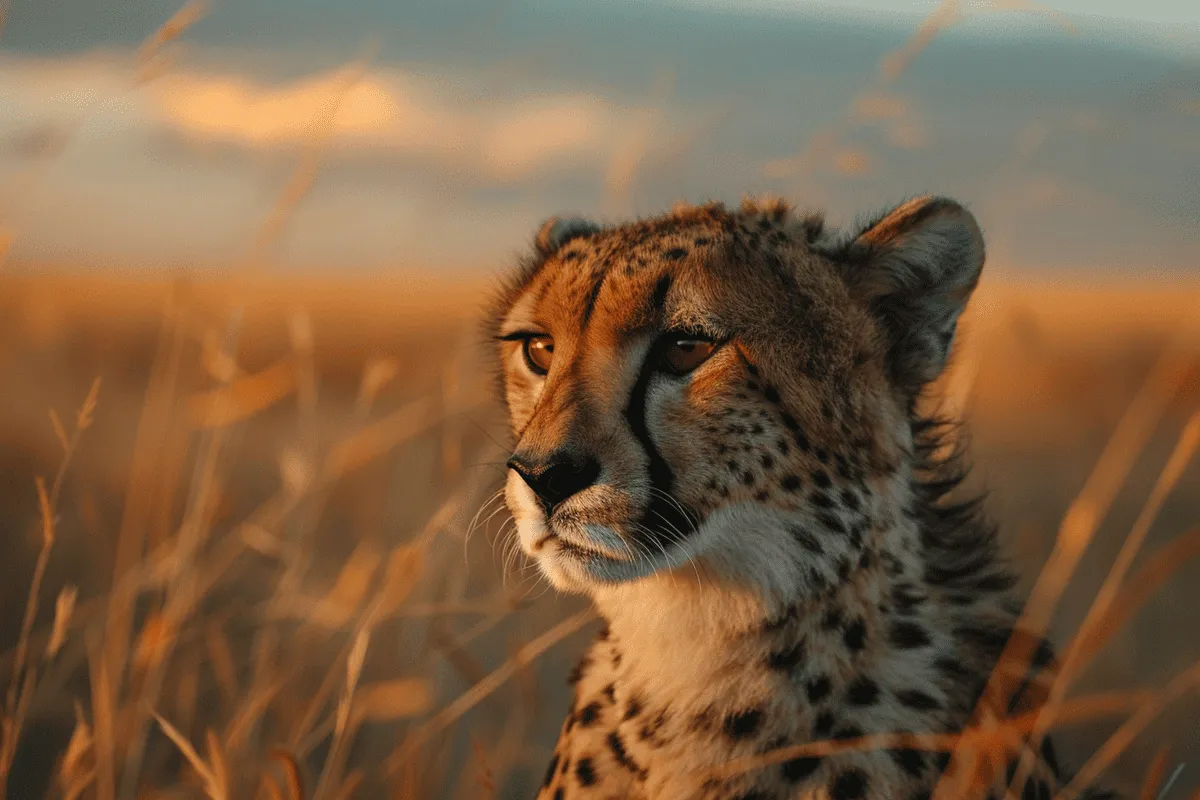10 Cheetah Facts (Speed, Spots, and Conservation Efforts)
Cheetahs are not just fast; they’re record-breaking sprinters of the animal kingdom, fascinating us with their speed and elegance.
Imagine an animal so swift it can outrun a sports car in a short dash!
Beyond their breathtaking velocity, cheetahs carry unique spots and incredible hunting techniques that have intrigued scientists and animal lovers alike.
Their slender bodies and wide nostrils make them perfectly designed for high-speed chases across the savannah.
Dive into our listicle to uncover more about these magnificent creatures. Scroll down to explore intriguing facts that showcase why cheetahs stand out in the wild.
1. Fastest Land Animal
Imagine being able to go from standing still to racing faster than a car on the highway in just a few seconds. That’s exactly what cheetahs, the fastest land animal, can do.
They have the incredible ability to reach speeds up to 75 mph. To put that into perspective, that’s as fast as cars on some highways!
But it’s not just about their top speed. What makes cheetahs truly remarkable is how quickly they get there.
They can accelerate from 0 to 60 mph in just a few seconds – quicker than most sports cars.
However, there’s a catch. Cheetahs are sprinters, not marathon runners. This means they maintain their top speed for only short distances before they need to rest.
It’s all about quick bursts of speed for them when hunting prey across the plains of Africa.
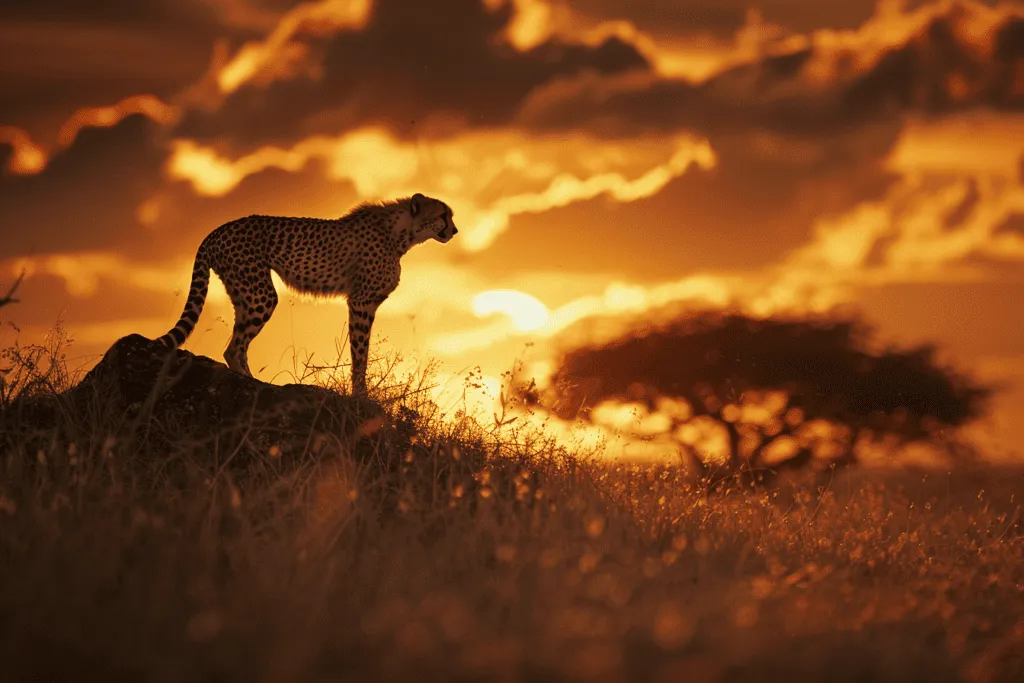
2. Incredible Acceleration
Cheetahs are the ultimate speed machines of the animal kingdom. They can outpace most sports cars.
Imagine this: a cheetah can go from 0 to 60 miles per hour in just a few seconds. That’s faster than many cars on the road!
What makes them so quick? It’s all about their powerful leg muscles.
These muscles give them the explosive power they need for rapid starts.
When chasing prey, such as gazelles, this burst of speed at the beginning is crucial.
But it’s not just about straight-line speed. Cheetahs also need to make sharp turns while chasing their fast-moving prey.
Here’s where their tail comes into play – acting like a rudder on a boat, helping them steer and make those quick turns without slowing down.
3. Semi-Retractable Claws for Grip
Cheetahs have a unique feature that sets them apart from other big cats: their semi-retractable claws.
Unlike their feline cousins who can fully retract their claws, cheetahs’ claws are always visible.
This difference is not just for show; it plays a crucial role in their survival.
When cheetahs sprint after prey at breathtaking speeds, reaching up to 75 miles per hour, they need all the help they can get to maintain traction.
Here’s where their semi-retractable claws come into play. These claws act like the cleats of a track star’s shoes, digging into the ground and providing the grip needed for those high-speed chases.
This design also aids in sharp turns and sudden stops—essential skills when chasing agile prey across the savannah.
Imagine trying to catch a fast-moving target; you’d want every advantage possible to keep your footing and stay on course.
Moreover, this claw structure complements other physical adaptations that make cheetahs formidable hunters—their long legs for wide-reaching strides, flexible spine for rapid direction changes, and tail for balance during sprints.
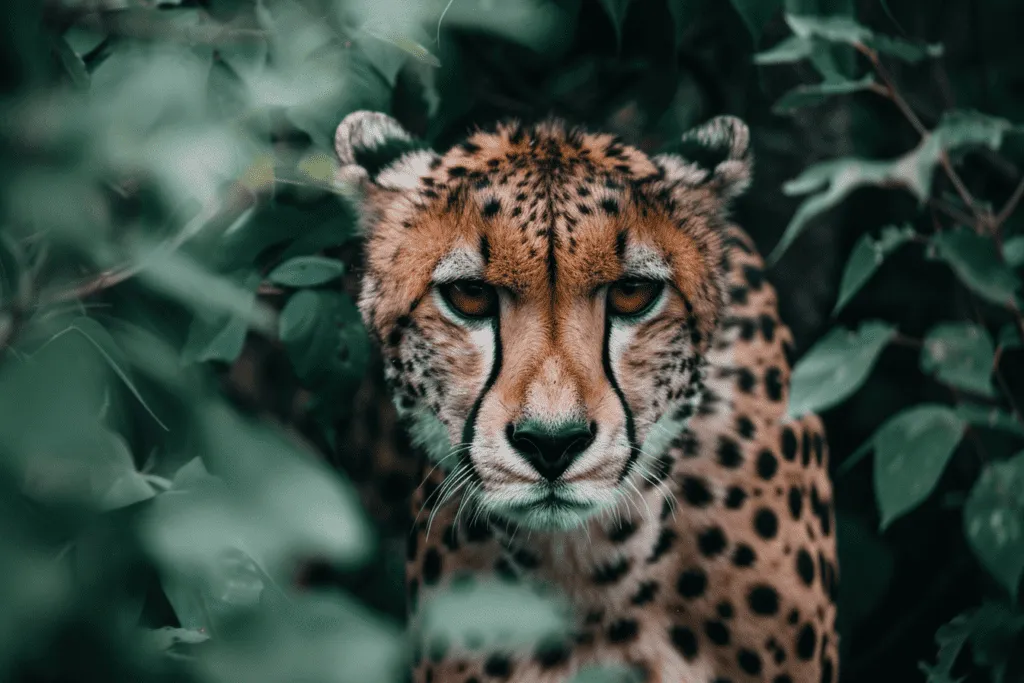
4. Distinctive Spotted Coat
The distinctive spotted coat of a cheetah is not just for show. These spots are crucial for survival, especially.
The pattern helps them blend seamlessly with their surroundings, making it easier to sneak up on prey.
What’s fascinating is that each cheetah has a unique pattern of spots, much like human fingerprints.
This uniqueness can help researchers identify individual animals in the wild and monitor their movements and health.
But there’s more to these spots than meets the eye.
The coat of a cheetah also plays an essential role in regulating its body temperature during those high-speed hunts under the scorching sun.
It reflects sunlight, helping prevent overheating, which could easily derail a hunt or even be fatal.
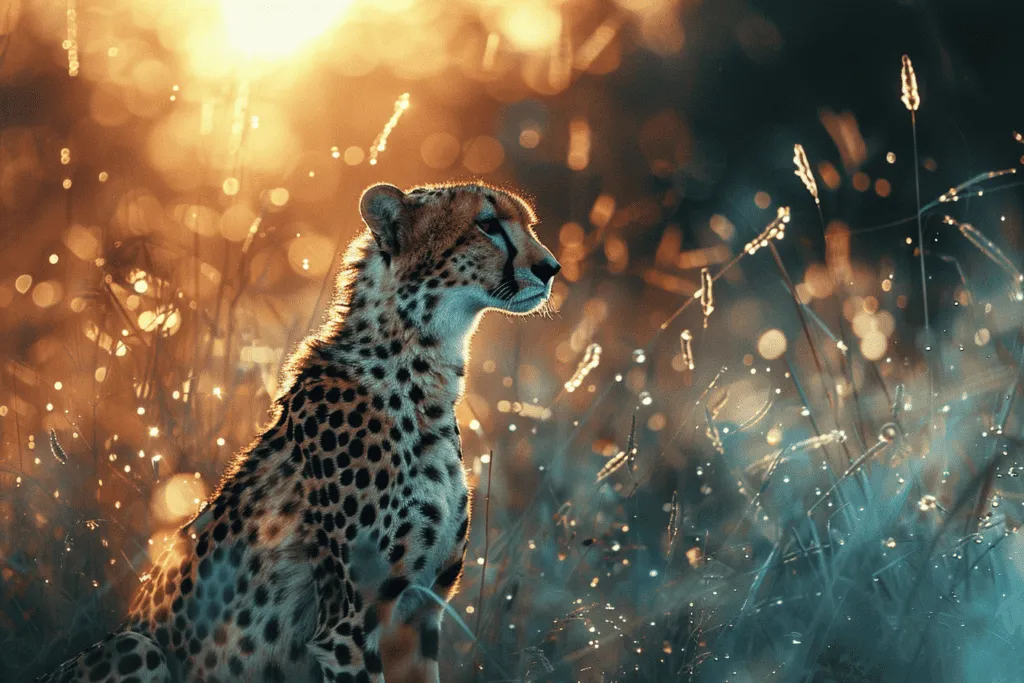
5. Unique Black “Tear Marks”
Cheetahs are known for their incredible speed, but have you ever noticed the unique black “tear marks” running from the inner corners of their eyes down to their mouths?
These markings are not just for show; they serve a critical purpose in a cheetah’s survival.
First off, these tear marks help reduce glare from the sun. Just like a football player might put black paint under their eyes to lessen the sun’s impact, these natural markings improve daytime vision for cheetahs.
This is especially important since cheetahs are primarily diurnal hunters—they do most of their hunting when the sun is up.
Moreover, during high-speed chases, which can reach speeds up to 75 miles per hour, focusing on prey becomes crucial.
The sharp turns and rapid movements require precise vision. Here again, those distinctive tear marks aid by helping focus on moving targets without being blinded by sunlight.
Interestingly enough, while all cheetahs share this feature, each pattern is as unique as fingerprints in humans.
These markings also play a role in social interactions among cheetahs and may even help mother cheetahs guide their cubs with ease.
6. Exceptional Vision During the Day
Cheetahs are not just fast; they see the world differently during the day.
Their ability to spot prey miles away is remarkable.
Imagine being able to see something as tiny as a rabbit from several football fields away! That’s how powerful a cheetah’s long-distance vision is.
What makes their daytime vision so sharp? It boils down to the high concentration of cone cells in their eyes.
These cells are like little magic wands that turn sunlight into clear, colorful images.
So, while we might squint or need sunglasses on a bright day, cheetahs can enjoy crystal-clear views without any hassle.
But it’s not just about seeing far or clearly for these big cats. They have a wide field of view too.
This means they can keep an eye on fast-moving targets easily—very handy when your lunch tends to sprint away at high speeds!
Think of it as having panoramic vision that helps you track everything happening around you without moving your head much.
7. Solitary Nature Except During Mating Season
Cheetahs are known for their love of solitude. They usually live and hunt alone or just with their offspring.
This lifestyle allows them to move swiftly across the plains without drawing too much attention from other animals or humans.
Males briefly join females but only for this purpose. Afterward, they go their separate ways again.
This short-lived partnership is focused solely on ensuring the continuation of their species.
Adult females take on the responsibility of raising cubs all by themselves.
They receive no help from males in nurturing or protecting their young ones.
This shows how self-reliant female cheetahs are, managing both hunting to feed their cubs and teaching them survival skills.
It’s fascinating how these majestic animals have adapted to a solitary life except during mating season.
Living alone helps them become efficient hunters, using stealth and speed over brute force which is often seen in groups of nocturnal predators.
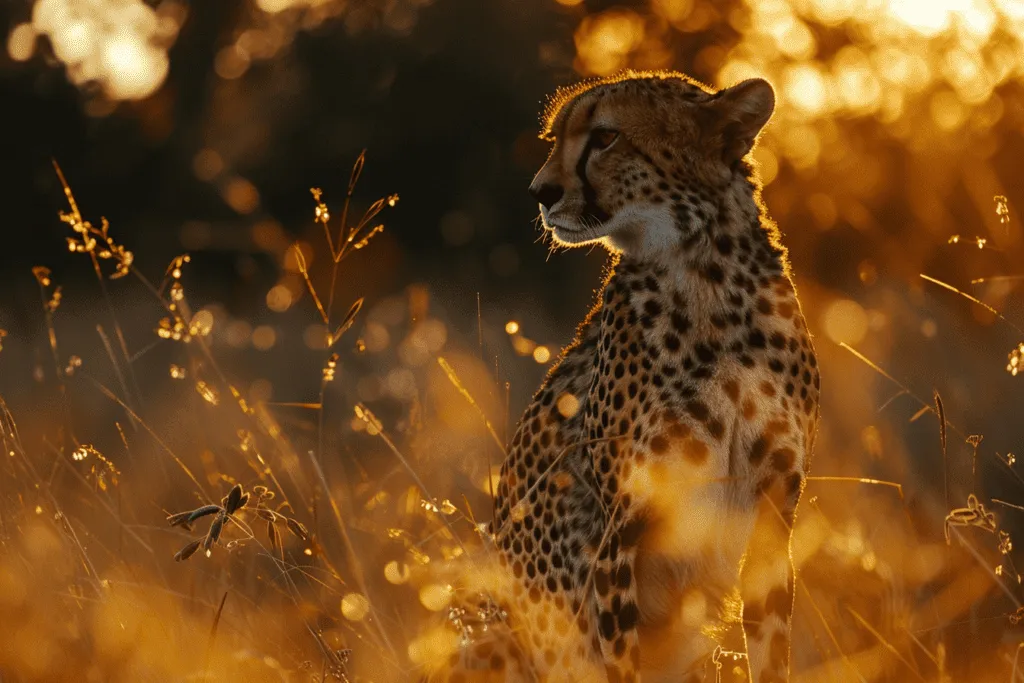
8. Vulnerable Status in the Wild
Cheetahs are facing a tough time. Their homes, the open grasslands, are disappearing because of humans taking over these areas for farming and cities. This is called habitat loss.
Also, some people hunt them illegally, which is known as poaching.
There aren’t many cheetahs left in the world. Experts think there are less than 7,000 of these fast animals living today. That’s not a lot when you think about how big our planet is.
Another big problem for cheetahs is finding enough food to eat.
With fewer wild animals like hares around for them to catch, it’s getting harder for them to feed their young ones and themselves.
Humans and cheetahs don’t always get along well either.
Sometimes cheetahs might take livestock from farms because it’s easier than hunting wild prey. This can make farmers angry, leading to conflicts that often end badly for the cheetahs.
Despite all these challenges, cheetahs try their best to survive in what used to be their historic range across Africa and even parts of Iran.
9. High Mortality Rate in Cheetah Cubs
Cheetah cubs face a tough start in life, with up to 75% of them not making it to adulthood. This high mortality rate is due to several factors that stack the odds against these young predators.
One major threat comes from other carnivores like leopards, lions, and hyenas. These animals see cheetah cubs as easy prey, especially when their mother is away hunting for food. The absence of the mother during these crucial times leaves the cubs extremely vulnerable.
Disease also plays a significant role in the survival rates of cheetah cubs. Being born into wild environments means they’re exposed to various pathogens without much defense.
The struggle for survival begins almost immediately after birth for cheetah cubs. Their early lives are marked by constant threats and challenges that only a few manage to overcome.
Despite their speed and agility later in life, these initial hurdles prove too high for many.
10. Conservation Efforts Include Breeding Programs
Captive breeding programs are a key strategy in the fight against extinction. They aim to bump up the number of cheetahs, which have been dwindling due to human expansion and loss of habitat.
By carefully selecting pairs, these programs work hard to ensure that future generations of cheetahs are healthy and strong.
Genetic diversity is like a treasure chest for species survival.
It makes sure that cheetah cubs are born with the best chance at life, free from diseases common in animals with too similar genes.
This focus helps maintain a robust population capable of thriving in the wild.
But it’s not just about breeding more cheetahs; it’s also about making sure they have somewhere safe to call home once they’re ready to roam free.
That’s where collaboration with local communities comes into play.
Protecting grasslands and ensuring there’s enough land for these speedy cats involves working closely with those who live near their habitats.
Frequently Asked Questions
Why is the cheetah known as the fastest land animal?
Cheetahs take the crown because they can hit speeds up to 75 mph! It’s like they have a built-in sports car engine, making them unmatched in a sprint.
How quickly can a cheetah accelerate?
Imagine going from zero to 60 mph in just three seconds. That’s cheetah-fast, outpacing even some of the quickest sports cars!
What makes a cheetah’s grip so good?
Their semi-retractable claws are like cleats, giving them top-notch traction for those high-speed chases.
Can you tell me about the cheetah’s coat?
Sure! Their coats are covered in unique spots which work like nature’s camouflage, helping them blend into their surroundings while stalking prey.
What’s with the black “tear marks” on a cheetah’s face?
These aren’t just for show; they help reduce glare from the sun and improve their vision during daylight—like built-in sunglasses!
How good is a cheetah’s vision during the day?
Exceptional! They’ve got eagle eyes for daytime hunting, spotting prey from afar with clarity that’d make binoculars jealous.
Are cheetahs social animals?
Not really. Cheetahs love their alone time. They only hang out with others when it’s mating season or if they’re raising cubs together.
Why are cheetahs considered vulnerable in the wild?
Habitat loss and decreasing prey numbers have put them on thin ice. These speedsters struggle without enough space to roam or food to hunt.
What’s happening with baby cheetah survival rates?
It’s rough. Many cubs don’t make it past their first few months due to predation and other challenges.

